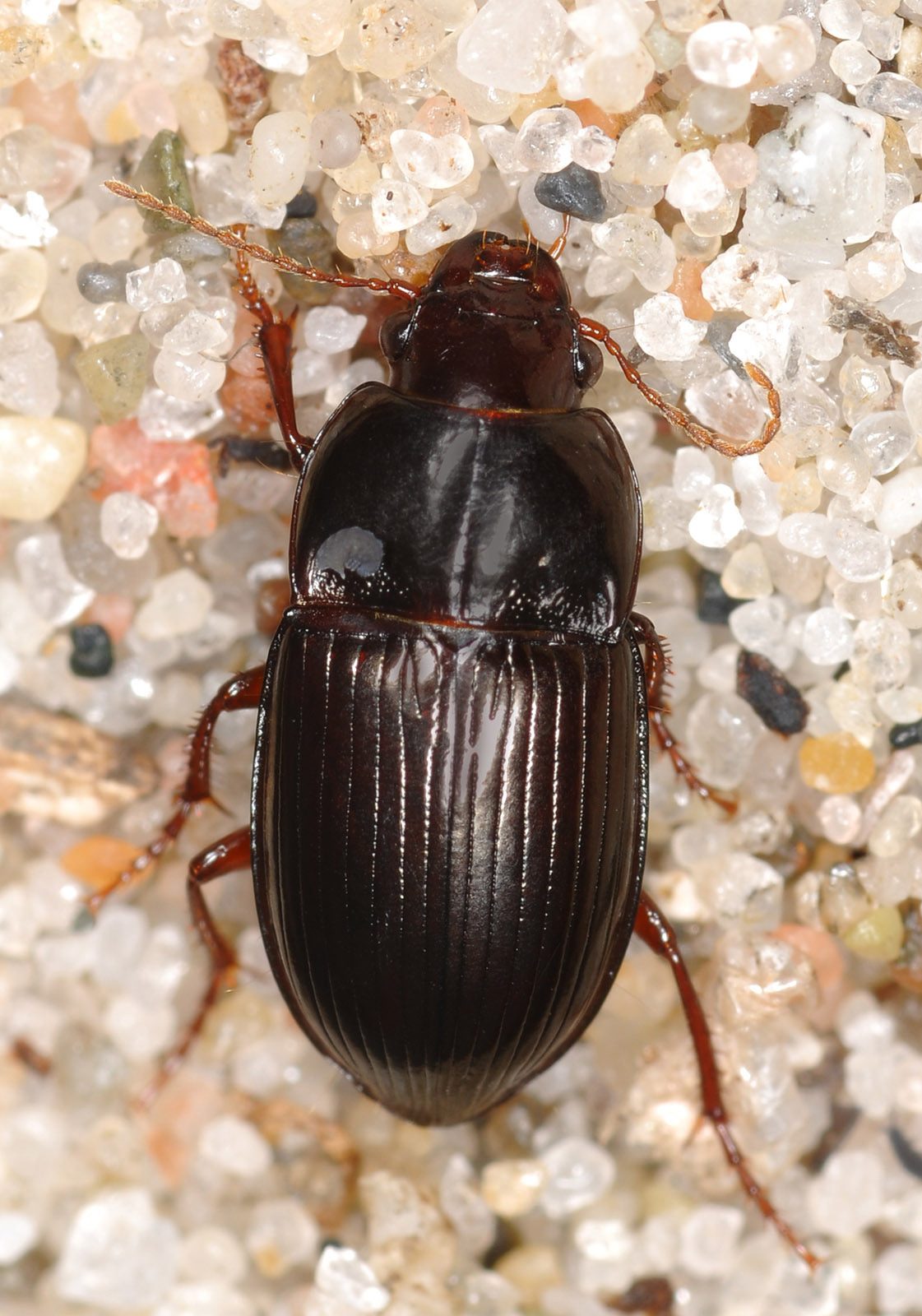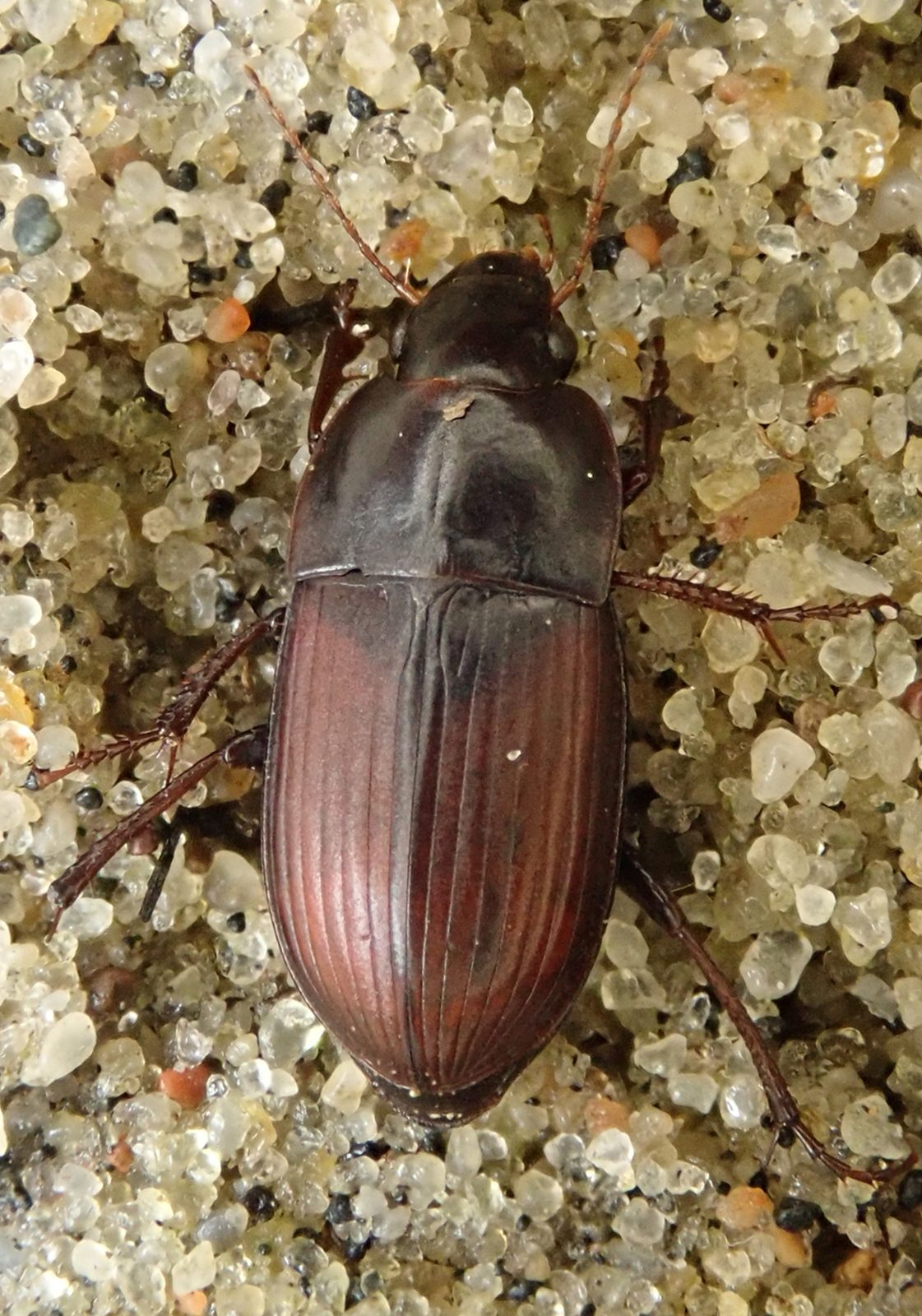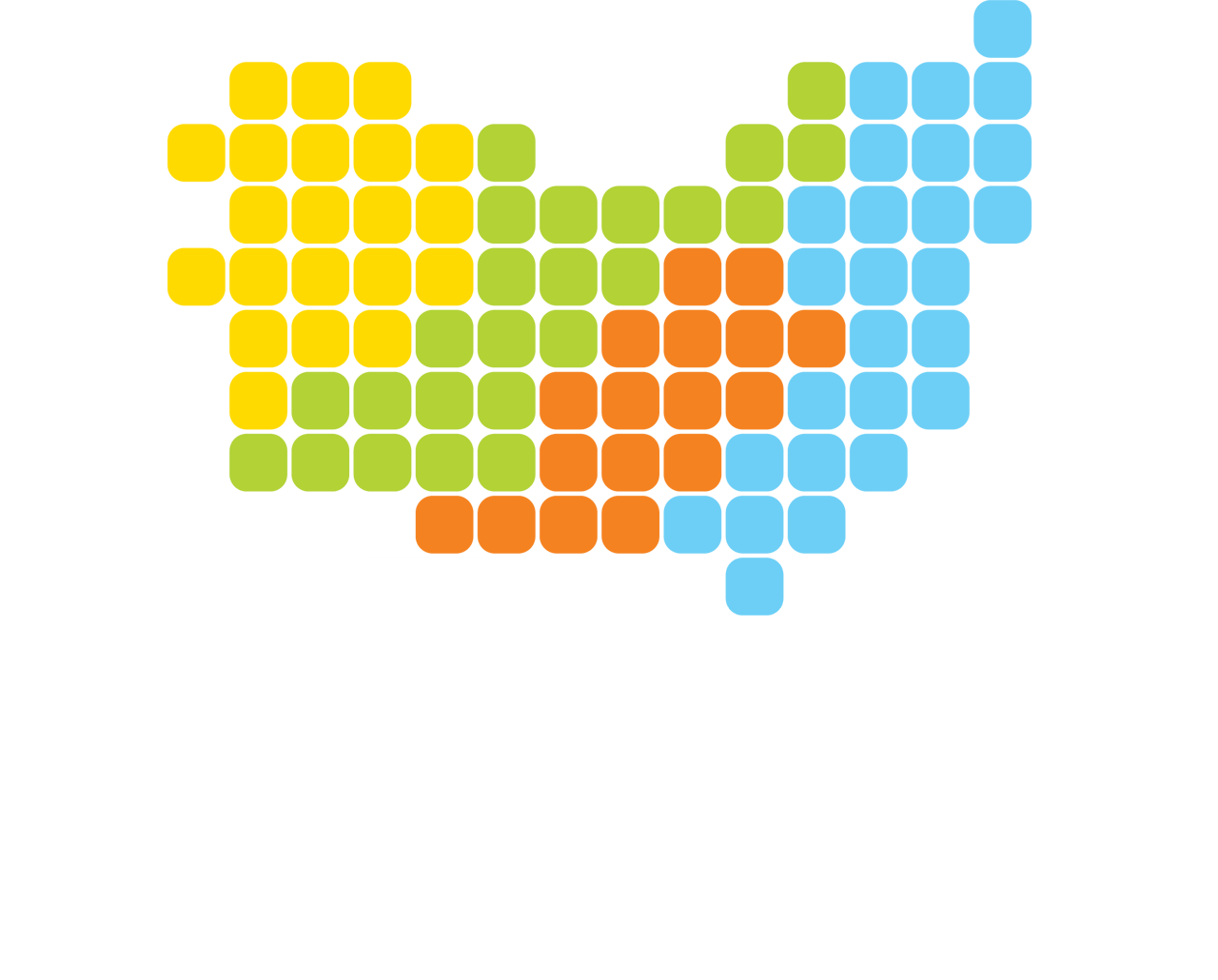Wormwood Moonshiners Amara fusca are small but striking beetles with shiny, metallic bronze-brown bodies. They were thought to have disappeared but were rediscovered by Mark Telfer and Brian Eversham in 1993.
Wormwood Moonshiners are 7.5-8.5mm long, larger than most common Moonshiner and Sunshiner species.
Their body is dark brown with a bronze metallic sheen, and – in the right light – their elytra can look reddish. They have a narrower pronotum than the elytra, with evenly rounded sides in front of the finely-toothed hind angles. Their legs are a lighter shade of brown than their elytra.
Visit coleoptera.org.uk for detailed identification notes.
Description


© Brian Eversham
We don’t have a map showing species distribution this month because there are few records. Wormwood Moonshiners are scarce. Most records for them are in Suffolk, but previously, they have been seen in Glamorgan, Kent and Sussex.
They are found in the Brecklands, where they like the dry, sandy areas and open ground.
The Wormwood Moonshiner’s survival is closely linked to the rare Breckland Wormwood (also known as Field wormwood) Artemisia campestris. A project to increase the number of plants in a dedicated nature reserve has proved successful, and the number of beetles breeding in the reserve is expected to grow in response.
The Wormwood Moonshiner is classified as Red Data Book (RDB) 1 – endangered – in 2007, it was also added to the UK Biodiversity Action Plan list of species requiring urgent conservation action and is now protected by the Natural Environment and Rural Communities Act 2006.
If you’d like to get involved with preserving these vulnerable beetles, you can volunteer with the Buglife survey team. You’ll be trained to identify them and participate in the evening surveys.
Distribution in Suffolk
Unsurprisingly, little is known about their lifecycle due to their scarcity.
Their eggs are laid in the soil, hatching into ground-living larvae. It is thought that, like similar species, the larvae are omnivorous, eating a mix of seeds and soft-bodied invertebrates that they encounter while burrowing through the soil.
After pupating, the adults emerge and search for their perfect match. Hunting for partners to continue the breeding cycle and ensure the survival of their species.
Lifecycle
© Brian Eversham
Diet
Wormwood Moonshiners have a very specialised diet, the seeds of the Breckland Wormwood. They will also eat the seeds of similar plants, such as Mugwort and Yarrow, but only at places where Breckland Wormwood is or has been present.
© Brian Eversham
© Brian Eversham
How did they get their name?
Wormwood: They eat the seeds of Breckland wormwood Artemisia campestris.
Moonshiner: Amara species that are active in the daytime are called Sunshiners. So, as Amara fusca is nocturnal, they were called Moonshiner.
The Wormwood Moonshiner could be challenging to identify as it’s similar in appearance to other Amara species, for example, Amara consularis and Amara equestris.
However, according to Brian Eversham, other species “are active in warmer weather, April-October, and many run around or climb vegetation in daylight; whereas the Wormwood Moonshiner is active only after dark and mainly during October-December (and maybe till February), and can still be out and about at temperatures as low as -7 °C.”
They are the only Amara species found in the Brecks area.
Similar species
Amara equestris © gijwans, iNaturalist.
Amara Consularis © wp-polzin, iNaturalist.


Spotting them
When to see them: October to December, after dark.
Remember to record your sightings if you spot them in Suffolk!
Your records help to build a picture of their population. The more sightings we have, the better we can protect this unique and beautiful beetle.
© Brian Eversham

